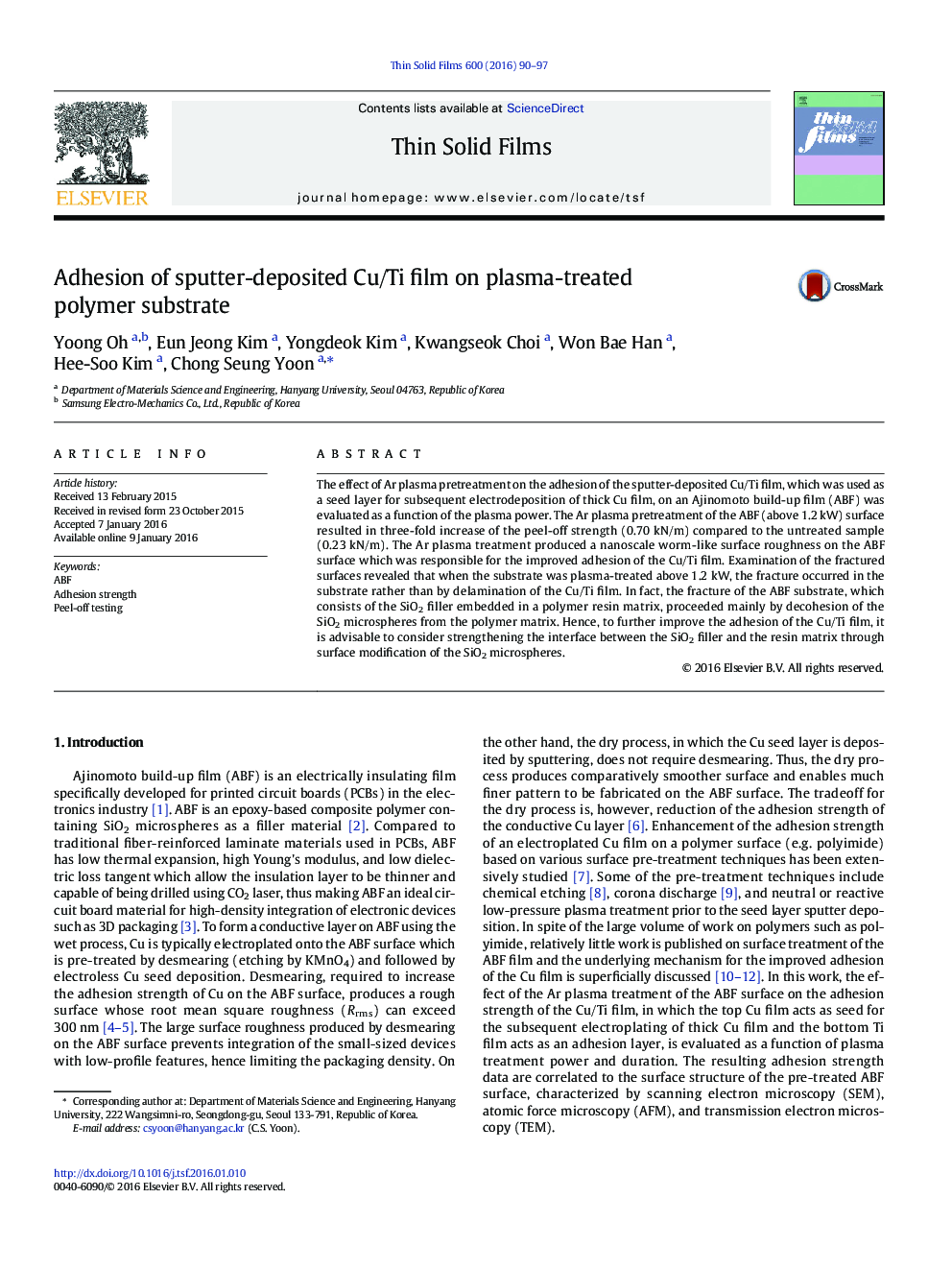| Article ID | Journal | Published Year | Pages | File Type |
|---|---|---|---|---|
| 1664175 | Thin Solid Films | 2016 | 8 Pages |
Abstract
The effect of Ar plasma pretreatment on the adhesion of the sputter-deposited Cu/Ti film, which was used as a seed layer for subsequent electrodeposition of thick Cu film, on an Ajinomoto build-up film (ABF) was evaluated as a function of the plasma power. The Ar plasma pretreatment of the ABF (above 1.2Â kW) surface resulted in three-fold increase of the peel-off strength (0.70Â kN/m) compared to the untreated sample (0.23Â kN/m). The Ar plasma treatment produced a nanoscale worm-like surface roughness on the ABF surface which was responsible for the improved adhesion of the Cu/Ti film. Examination of the fractured surfaces revealed that when the substrate was plasma-treated above 1.2Â kW, the fracture occurred in the substrate rather than by delamination of the Cu/Ti film. In fact, the fracture of the ABF substrate, which consists of the SiO2 filler embedded in a polymer resin matrix, proceeded mainly by decohesion of the SiO2 microspheres from the polymer matrix. Hence, to further improve the adhesion of the Cu/Ti film, it is advisable to consider strengthening the interface between the SiO2 filler and the resin matrix through surface modification of the SiO2 microspheres.
Keywords
Related Topics
Physical Sciences and Engineering
Materials Science
Nanotechnology
Authors
Yoong Oh, Eun Jeong Kim, Yongdeok Kim, Kwangseok Choi, Won Bae Han, Hee-Soo Kim, Chong Seung Yoon,
